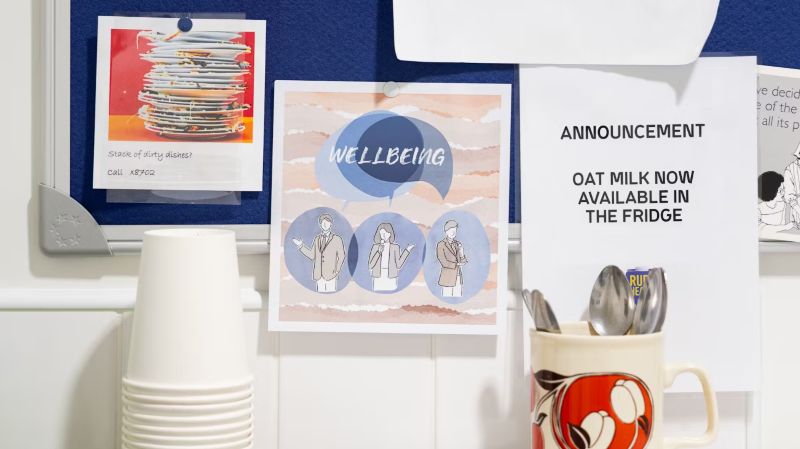
PHOTO COURTESY OF JENNIFER MCLELLAND

By Jennifer McLelland
Freelance Columnist
California Health Report
Introduction
For me, the most important thing about the holidays is food. I love cooking almost as much as I love eating. For Thanksgiving, I cook turkey. For Christmas, prime rib. And the stars of the show are the side dishes: green beans, mashed potatoes, roasted Brussels sprouts, and, of course, pie. As a mother, when I serve my family food, it isn’t just food—it represents love.
But that perception was challenged when my son, James, was born with medically intensive disabilities. I wanted my son to have a positive relationship with food, even though he is fed through a tube. To do that, I had to tackle my own emotional baggage about what it means to feed my family.
James’ relationship with food is complicated. He was tube fed for most of his early life, first with formula, and later with food processed in a blender. Now, at age 12, he gets about half of his calories from food and relies on Pediasure—vitamin-fortified formula—to get enough calories. For years, I felt guilty about the Pediasure. Every can made me feel like I was failing to give him “real” food. It took me years to accept that food doesn’t have a moral value. Feeding your child easily digestible food so they get adequate nutrition isn’t a weakness. Food doesn’t have to be a source of joy. It can simply be a source of nourishment.
This isn’t so much a story about how my son learned to eat as it is a story about how I came to terms with how he eats. The fact that my son hated food from a young age because his disabilities made the act of eating painful and scary made every mealtime hard. And for the longest time, I blamed myself.

Guilt in the NICU
In my rational mind, I know that I’m a good mother. But maternal guilt—especially around dietary choices—is common. My guilt around feeding started when my son was in the neonatal intensive care unit (NICU). I wanted to breastfeed. I’d memorized the adage “breast is best,” especially for the tiniest and sickest babies. I had breastfed my older child and easily transitioned to pumping when I went back to work. But the stress of pumping for a NICU baby was overwhelming. The hospital where my son spent most of his first year was a three-hour drive from our home. When I arrived at the hospital, I was desperate to see him, but I had to go to the pumping room instead. I couldn’t hold my own baby, and he couldn’t cry because of the tubes down his throat. So I played YouTube videos of babies crying to try and trigger the letdown reflex. It didn’t work. I could never release enough milk.
In my rational mind, I knew I wasn’t failing my son. All his medical needs were being met, and he was growing. But the decision to stop pumping and feed my son formula was hard. I felt so much pressure to keep pumping. It didn’t help that my son rejected every normal formula and had to be fed expensive specialty formula directly into his small intestines because of near-constant vomiting.

A Tube-Feeding Odyssey
During the early years, tube feeding solved a problem. My son was tiny and sick. To get better, he had to grow. To do that, he needed calories.
But tube feeding also created problems. My son had severe oral aversion—anything that touched his mouth triggered his gag reflex. He wouldn’t take a bottle or a pacifier or even put his fingers in his mouth. That meant he missed out on forming the neural-motor connections that pave the way for eating and speaking.
As a pathological overachiever, I didn’t want to just tube feed my child. I wanted to be the best at tube feeding. As we struggled to find a formula that worked, my son’s doctor suggested a blended-food diet but didn’t provide much guidance on how to do it. I started with baby food, then slowly started blending normal food and putting it through the tube. Through trial and error, I figured out the best, most calorically dense and nutritionally complete blended diet. The whole family worked to blend a month’s worth of food, made from bananas, carrots, spinach, eggs, and flax seed.
All the work I put into blending food was important for my son’s health—and my mental health. Having normal food in his stomach solved James’ constant vomiting and made the process of feeding him somewhat more normal. At a meal, everyone else would eat food from a plate and he would have blended food through the tube to his stomach. For me, making blended food instead of just opening a can and pouring it into the feeding pump made me feel like I was doing my job as a mom.

Learning to Eat
Swallowing involves about 50 tiny muscles in the mouth, tongue, and throat. Dysphagia is when something goes wrong in that process. Treating dysphagia in a medically fragile baby who’s never eaten and can’t understand detailed instructions is incredibly difficult.
There are formal therapy programs that are supposed to help children like my son learn to eat. But there aren’t enough speech-language pathologists and occupational therapists who specialize in children, especially those with special health care needs. Our local hospital had feeding therapists with special training in medically complex children. But their program had a years-long waitlist. Feeding therapy teaches children to overcome their aversion to tastes and textures by breaking down the process of chewing and swallowing food into small steps the child can practice.
There was another barrier to getting feeding therapy. My son needed to pass a swallow study (a medical test to make sure the things he swallowed went to his stomach and not his lungs). But he couldn’t pass a swallow study because he didn’t know how to swallow. The system wasn’t set up to work, so it fell to me to fix it.
To get my son to eat, I had to help him overcome his oral aversion. To do that, I tried to present him with different kinds of food to eat consistently and without pressure. I did OK with consistency, but I put pressure both on him and on myself. Our parent-child dynamic worked with mobility and speech because he wanted to move and communicate. The dynamic fell apart with food because he didn’t want to eat. The textures, tastes, and physical skills needed were overwhelming for him, and so was the pressure I put on him.
In the end, it was Pediasure that started my son’s journey toward enjoying food. One day, he discovered the taste of Pediasure from chewing a hole in his feeding pump line when he was teething. He became willing to eat vanilla Pediasure. He didn’t have the oral skills to suck on a bottle or drink from a cup, but the feeding pump could deliver a few drops of formula into his mouth at a time in a way that didn’t scare him.
Breakthroughs
As he grew, James alternated between hating food and wanting to participate in the thing everybody else was doing. He was particularly obsessed with frozen yogurt shops. He would be so excited to pull the yogurt handle and scoop the toppings that he would promise to eat it. Then he would get his perfect, beautiful frozen yogurt and cry. It was heartbreaking. Until one day, at age 4, he took his first bite of frozen yogurt. It was a single bite, and he didn’t like it, but it was a really big deal.
I pinned all my hopes on an inpatient feeding program at Children’s Hospital of Orange County, a five-hour drive from where we live in California’s Central Valley. The program is the only one of its kind in California and is created specifically for medically complex children who didn’t learn to eat as babies. My son went through the program the summer after kindergarten. Usually, kids stay with their parent in a special room that is set up to feel more like home than a hospital, but my son had to sleep in the ICU because of his ventilator. Those were the hardest three weeks of my life because it was all about food and it was all out of my control. In reality, it had always been out of my control.
The inpatient program worked enough to be considered a success. When my son entered the program he could only eat a single graham cracker. He left the program able to eat a white-bread-and-American-cheese sandwich with the crusts cut off. It took him about half an hour to do that. However, eating food was physically exhausting for the muscles in his jaws and he still needed to chug a Pediasure for concentrated calories.
I still felt like a failure. Now, instead of nutritionally and calorically perfect blended food in his tube, he was living on Pediasure and graham crackers. He knew how to eat, but it was a Pyrrhic victory because now every mealtime was a battle of wills. He was willing to eat food, but he resented it and physically struggled with each bite. Meanwhile I was genuinely afraid that he wasn’t consuming enough calories to live. That fear wasn’t in my head. Medically fragile kids are frequently underweight, because being sick all the time burns a ton of calories. At every medical appointment, James was weighed and I was tasked with figuring out a way for him to eat more and gain more weight.
It turned out that vegetarian food was key to getting him to eat more. Meat and other protein-dense foods are harder to chew and swallow than starchy foods. Vegetarian entrées like beans and tofu were easier for him to manage, with the side benefit of being healthy for the rest of the family. He started to enjoy trips to the farmers market, and could eat a few bites of whatever he chooses (and wash it down with Pediasure).
I wish I could say there was something I did that made him turn the corner, but I think it was just time. After a couple years of seeing eating as a chore, James got good enough at it to start actually enjoying some foods. That was always my goal: I didn’t want him to just eat food, I wanted him to love food.
The process was a learning experience for me. I had to relax and let him progress at his own pace. I had to understand that even when he loves a new food, he still needs to rely on “safe” and easy foods for most of his calories. Plain communication also helped. If James doesn’t like a lasagna I’ve made, for example, he’ll tell me.
These days, my son doesn’t love all the holiday foods, but he does eat the things he likes. He skips the Halloween candy because it has too many weird textures, but he enjoys trick-or-treating. For Thanksgiving he’ll eat a few bites of anything as long as it’s covered in gravy. During Christmas season, there is one dessert he adores: vanilla meringue cookies that are soft enough to melt in your mouth. His palate may not be expansive, but for me the most important thing is that he’s finally able to find joy in food. That’s all I ever wanted for him.
Originally published by Yes! Magazine, 01.02.2024, under a Creative Commons Attribution-NonCommercial-NoDerivatives 4.0 International license.







